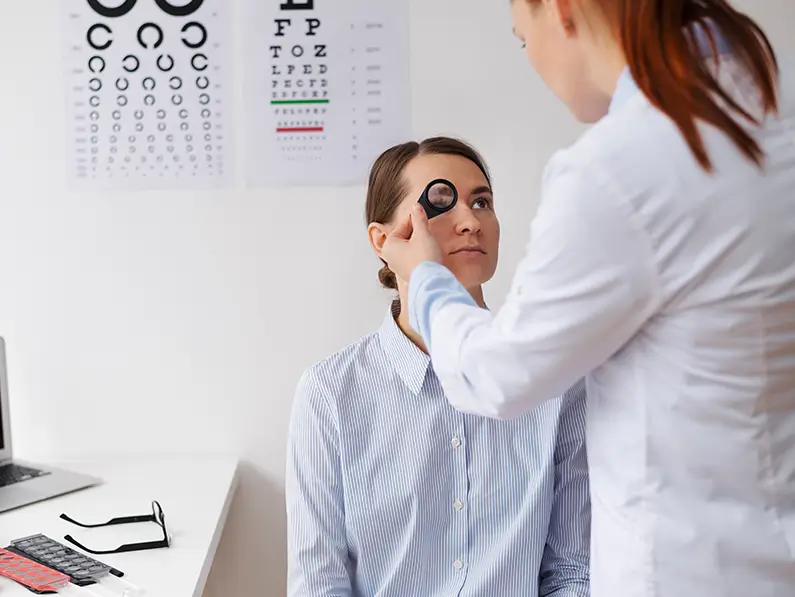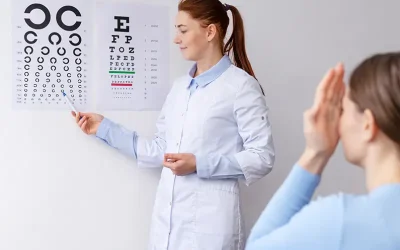Right from the start, the answer is clear: routine eye exams are indispensable because they catch eye diseases before they steal away your vision. Imagine discovering a tiny crack in a dam before it becomes a flood, this is exactly what regular check-ups do for your eyes. By detecting conditions early, you can take swift action and maintain a life filled with vivid, clear moments. If you value your sight as one of life’s greatest gifts, then making time for routine eye exams is non-negotiable.
Importance of Routine Exams
It’s no secret—our eyes are essential to how we experience the world. Routine eye exams go far beyond updating your glasses prescription. They serve as a safeguard, identifying subtle changes that could signal the onset of serious conditions like glaucoma or diabetic retinopathy. By addressing these issues early, you’re not only protecting your vision but also investing in your overall quality of life.
Overview of Vision Loss
Vision loss can creep up quietly, often without obvious symptoms until significant damage has occurred. Many eye diseases start subtly, making it difficult to detect issues until they have advanced. Regular eye exams offer a critical opportunity to catch these changes early, ensuring that you can intervene before the condition worsens. This proactive approach is your best defense against unexpected vision loss, helping you enjoy clear and vibrant sight for years to come.
Overview of Common Eye Diseases
Cataracts
Cataracts are the leading cause of vision impairment worldwide. They occur when the lens of your eye becomes cloudy, making it difficult to see clearly. While cataracts often develop slowly, early detection can lead to timely treatment—typically surgery—that restores clear vision.
Glaucoma
Glaucoma is another silent threat. This group of eye conditions damages the optic nerve, often due to increased pressure in the eye. Because glaucoma typically develops without noticeable symptoms, routine exams are essential to detect the disease early. With early intervention, treatments can slow or even halt the progression, preserving your sight.
Macular Degeneration
Age-related macular degeneration (AMD) affects the part of your eye responsible for central vision. AMD can make everyday tasks such as reading and driving challenging. Early diagnosis through routine eye exams can help manage the condition with lifestyle changes, medications, or laser treatments.
Diabetic Retinopathy
For people with diabetes, diabetic retinopathy is a common and potentially severe complication. High blood sugar levels can damage the blood vessels in the retina, leading to vision loss. Regular eye exams allow for early detection and treatment, which can prevent the progression of this condition.
The Role of Early Detection in Treatment
How Early Detection Works
Early detection is like catching a small leak before it turns into a flood. During a routine eye exam, an eye care professional uses a series of tests to measure your vision, check eye pressure, and inspect the health of your retina and optic nerve. These tests can reveal subtle changes that signal the early stages of diseases like glaucoma or diabetic retinopathy. By identifying these issues early, doctors can recommend treatments that significantly reduce the risk of long-term damage.
Advantages of Timely Intervention
Catching an eye problem early offers numerous advantages. Treatments are often less invasive and more effective when the condition is diagnosed at its initial stage. For example, early intervention in glaucoma can help preserve your peripheral vision, while timely treatment for cataracts can restore clarity without complications. Ultimately, early detection allows for a proactive approach, enabling you to maintain your quality of life with minimal disruption.
Statistical Benefits of Routine Exams
Data and Research Findings
Numerous studies have shown that routine eye exams can lead to early detection in up to 90% of cases for many eye diseases. Research indicates that individuals who undergo regular eye screenings are far more likely to catch conditions like glaucoma and diabetic retinopathy before they cause significant damage. This data underscores the importance of integrating eye health into your overall preventive care routine.
Comparative Studies
When comparing outcomes between patients who receive regular eye exams and those who do not, the difference is striking. Patients with routine check-ups experience fewer instances of severe vision loss and have higher rates of successful treatment outcomes. These studies not only highlight the direct benefits of early detection but also stress the economic benefits—preventing costly treatments and potential loss of productivity due to vision impairment.
Expert Advice on Preventive Care
Tips from Eye Care Professionals
Eye care professionals consistently advocate for regular eye exams, recommending that adults get a comprehensive eye exam at least once every two years. For those with risk factors such as a family history of eye disease, diabetes, or high blood pressure, more frequent exams may be necessary. Experts also suggest that maintaining a healthy lifestyle—such as eating a balanced diet rich in antioxidants, not smoking, and wearing sunglasses to protect against UV rays—can further protect your eyes.
Recommended Examination Frequency
While the general guideline is every two years, certain groups should be more vigilant:
- Children and teenagers: Regular exams are essential as their eyes develop.
- Adults over 40: The risk of age-related eye diseases increases.
- Individuals with chronic health conditions: More frequent check-ups are advised for those with diabetes, hypertension, or a family history of eye conditions.
Why Preventive Eye Care Matters
Routine eye exams are not merely an optional part of health care—they are essential. By incorporating regular screenings into your health regimen, you can catch problems early, reduce the risk of severe vision loss, and maintain a high quality of life. Think of it like a regular car service: a small check-up now can prevent a major breakdown later.
The Connection Between Technology and Eye Health
Advances in technology have revolutionized eye care. Today, modern diagnostic tools enable eye care professionals to capture detailed images of the retina, measure eye pressure with pinpoint accuracy, and even use artificial intelligence to identify early signs of disease. This integration of technology in routine exams has made early detection more accurate and accessible, allowing for prompt and precise treatment.
Tips for Maintaining Healthy Eyes
Beyond regular check-ups, there are several practical steps you can take to protect your vision:
- Follow a nutritious diet: Foods rich in omega-3 fatty acids, lutein, and vitamin C are great for eye health.
- Wear protective eyewear: Sunglasses that block UV rays can prevent damage from sun exposure.
- Take regular breaks: If you spend long hours in front of a computer, follow the 20-20-20 rule—every 20 minutes, look at something 20 feet away for at least 20 seconds.
- Quit smoking: Smoking is linked to an increased risk of developing cataracts and macular degeneration.
- Manage chronic conditions: Keep conditions like diabetes and high blood pressure under control to reduce the risk of diabetic retinopathy and other complications.
Lifestyle Changes to Enhance Eye Health
Incorporating healthy habits into your daily routine can go a long way in protecting your eyes. For example, staying hydrated helps maintain the moisture balance in your eyes, while regular physical activity promotes overall blood circulation—including to your eyes. Small changes, like adjusting the brightness of your screen or ensuring proper lighting while reading, can also reduce eye strain and fatigue.
Conclusion
Routine eye exams are a crucial part of maintaining lifelong vision. They offer the chance to catch eye diseases before they progress to a stage where vision loss becomes irreversible. With a variety of common eye conditions lurking in silence, early detection through regular exams can make all the difference. The statistical benefits, expert recommendations, and inspiring case studies all point to one simple truth: preventive care is the best protection for long-term vision. Make your eye health a priority today—schedule an exam and take a proactive step towards preserving the gift of sight.
FAQ: Your questions answered
How often should I get an eye exam?
It is generally recommended to have a comprehensive eye exam every two years, but those with risk factors such as diabetes or a family history of eye disease may need more frequent visits.
Can routine eye exams detect diseases before symptoms appear?
Yes, routine eye exams can identify early signs of conditions like glaucoma, diabetic retinopathy, and macular degeneration before noticeable symptoms occur, allowing for timely intervention.
What are some common eye diseases that can be detected early?
Common diseases include cataracts, glaucoma, age-related macular degeneration, and diabetic retinopathy. Early detection often leads to more effective treatment.
Are there lifestyle changes I can make to improve my eye health?
Absolutely! Eating a nutritious diet, wearing UV-protective sunglasses, taking regular breaks from screens, and managing chronic conditions can all help maintain healthy eyes.
How does technology improve the effectiveness of routine eye exams?
Advances in diagnostic tools—such as digital imaging and AI-assisted analysis—enable eye care professionals to detect even subtle changes in eye health, making early diagnosis and treatment more accurate and effective.


